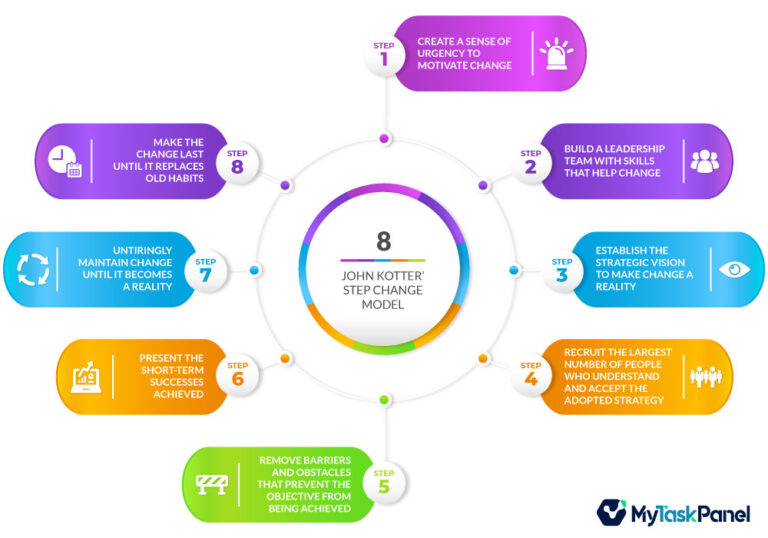Change management: importance, steps and examples

Because all change brings uncertainty and sometimes even fear, it is normal for the famous resistance to appear. In this opportunity, we tell you how to carry out effective change management.
When is good change management necessary?
Good change management is key when you want to implement deep, radical changes or changes that affect many people. Such changes will need to be managed appropriately so as not to cause chaos, confusion, resistance or slowdown in the business processes associated with these changes.
The objective of change management is, in a few words, to reduce the negative impact of the change (there will always be a minimum percentage) and to achieve a successful implementation.
Most used change management models
In all the models that we name below there should be a change management group in charge. It is essential that the changes are supported by the highest management of the area that is going to undergo those modifications.
1. Lewin
It is divided into three major stages:
- Unfreeze: the focus should be on preparing the team and convincing them of the positive aspects of the change so that they accept it as something necessary. As a leader, you should play a transformative role and inspire action among team members.
- Change: Focused on helping team members adapt to change during the implementation process. It is important to train them, collaborate so that they feel comfortable with the new reality. This stage requires the readjustment of all team members to a new work dynamic.
- Refreeze: the change already implemented must become the new standard. The new work dynamic must have already been adopted and there must be a point of stability.
2. ADKAR
Each letter of the name presents a phase of the model:
- Awareness: working to raise awareness of the need for change, keeping workers informed and giving them feedback on a constant basis.
- Desire: to get the desire to be part of it and support the change, through incentives.
- Knowledge: to transmit knowledge about what is necessary to achieve a successful change. It offers training and mentoring.
- Ability: having the ability to implement the change. It provides the necessary tools, platforms and inputs for the transformation to happen.
- Reinforcement: to consolidate the change with a long-term perspective. Recognize achievements, constantly monitor and evaluate in order to drive the team forward.

3. Leading Change (Kotter's Model)
It is made up of several shorter stages than previous models:
- To create a sense of urgency to highlight the importance of the change, that it is necessary and that it must be implemented.
- To form a powerful coalition to lead the change, a team that is part of it.
- Creating a vision that supports change, a vision that is imaginable, desirable, achievable, flexible, and communicable.
- To communicate the vision clearly, through promoters of change (the same members involved).
- Eliminate any obstacles that might arise.
- Achieving short-term victories to encourage results and maintain motivation.
- Relentlessly push forward with change until the vision is achieved.
- To anchor changes in corporate culture to replace old habits and make the new the standard, part of everyday life.
In short, we recommend that you take into account one of these models to achieve good change management. Remember that knowing how to manage these changes is key when they are larger, more radical and involve a larger group of members of the company.
